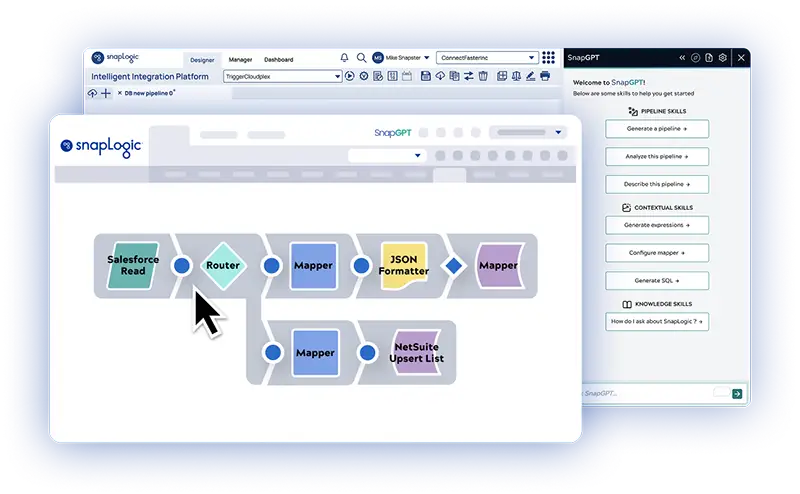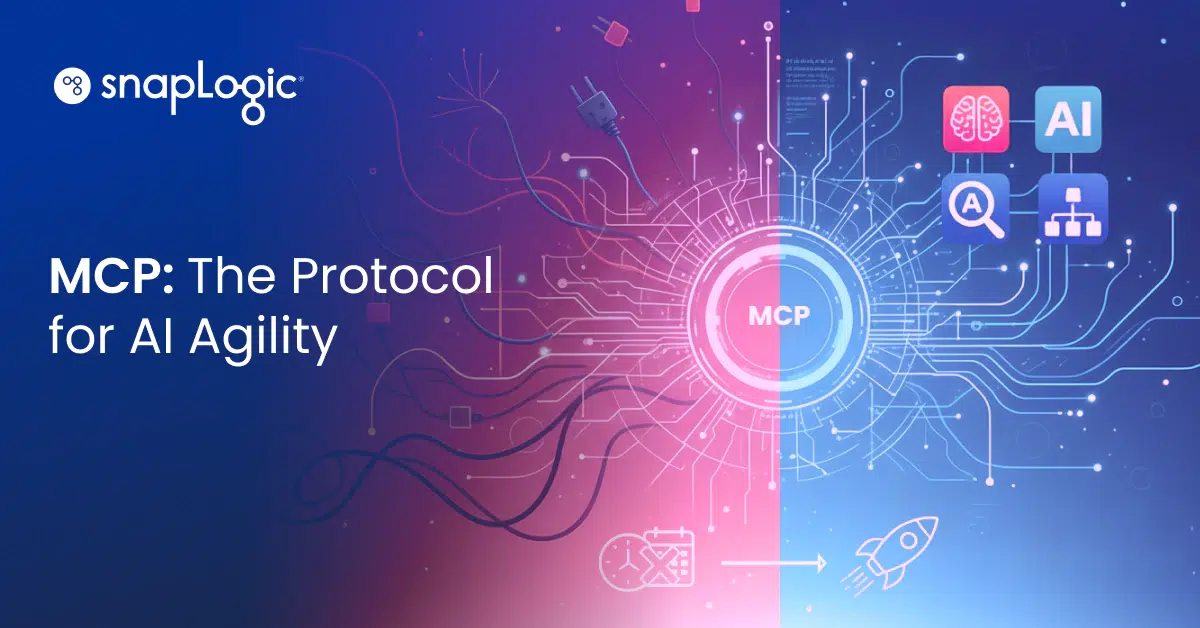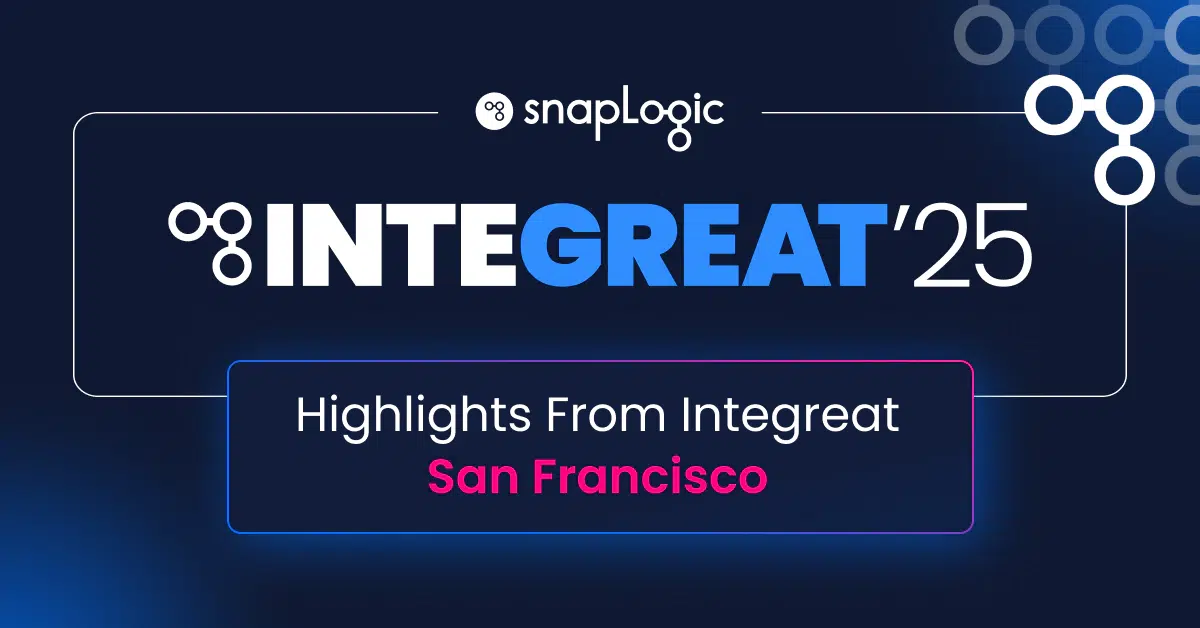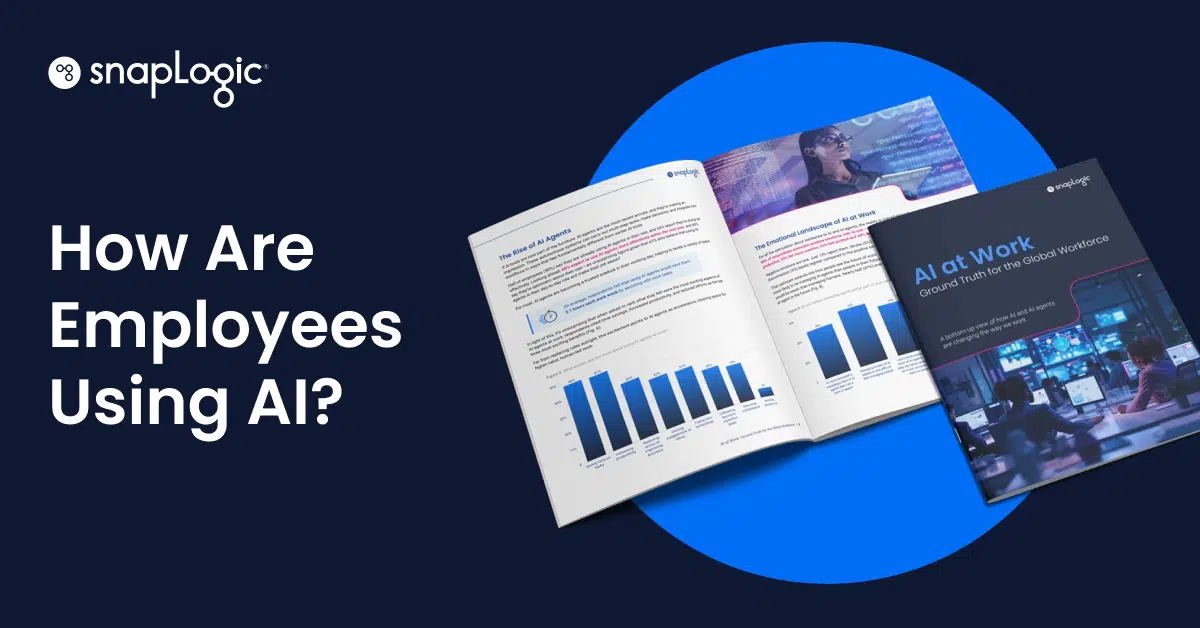After a whirlwind tour of the U.S. that brought the conversation on Enterprise AI to cities like San Francisco, Chicago, and New York City, the grand finale was Integreat 2025 in London.
The overarching theme of the series has been the arrival of the era of AI-powered Digital Labor, and the London event brought this conversation to a new level of maturity. With a packed agenda and 300+ attendees, the focus shifted from “if” AI will transform the enterprise to “how” it is already delivering concrete results, powered by innovations like SLIM and the essential factor of seamless connectivity.
This post dives into the key announcements, practical lessons, and real-world success stories from the event that signal a new age for enterprise intelligence.

Key announcements: SLIM and the power of the Model Context Protocol (MCP)
Our CTO, Jeremiah Stone, provided a snapshot of the state of AI adoption and what is coming next. In a live demo from the stage, Jeremiah demonstrated how easily an MCP client, such as Anthropic’s Claude Desktop, could connect to various tools using SnapLogic pipelines as MCP servers to expose all the back-end systems required to run background checks on a new supplier and onboard them.
The other big announcement of the keynote was SLIM, the SnapLogic Intelligent Modernizer. This is the answer to the question of what to do with legacy integration middleware that might be holding companies back from fully committing to AI and delivering on their strategic initiatives.
Customers of these obsolete platforms often feel trapped, with looming end-of-life dates for tools they rely on for significant parts of their businesses, but are unwilling to face the open-ended timelines and very real risks of migration away from those platforms.
SLIM addresses both the duration and the risk of these projects. It harvests the value trapped in these dead-end tools, documents it in full (often for the first time!) and uses GenAI to create, and, importantly, test new SnapLogic pipelines that can deliver that value today and in the future.

Practical AI workshops to calculate ROI and ensure connectivity
There were two separate AI-related workshops, each one hands-on in its own way, but taking a deeper dive into the different requirements for the success of AI projects.
One was run by our partners at Slalom, who shared their methodology for calculating the ROI of AI projects. This topic was extremely timely, as all too often the fear of missing out on the undeniable potential of AI can lead to projects rushing past this crucial step. Focusing on concrete use cases, goals, and milestones is a key step to ensuring the success of AI projects.
In a similar vein, the other hands-on workshop addressed the problem of connecting AI tools to the existing system, apps, and data that are required for the AI to deliver useful results. But with a twist.
Our creative colleague Stan Okunevic built an AI-powered “whodunnit,” where participants tried to identify the culprit, working with an AI detective that has access to a variety of tools. That integration runs over MCP, with SnapLogic pipelines acting as the connection points between the AI and the wider world.
This plug-and-play connectivity with the systems that run the business simplifies and accelerates the deployment of AI tools.

Lessons from leading enterprises
The best proof of the value that such technological advances can deliver is to hear directly about the concrete results that customers have already achieved.
First up was Boehringer Ingelheim, a 140-year-old company that is rapidly transforming into a data-driven company. Such a strategic change requires a bold reimagining of how data is accessed, integrated, and transformed into business value. It was fascinating to hear about how such a wide-ranging project intersects with the realities of long-established business processes.
A much younger company is Spotify, but the IT team there is subject to the same constraints about management of financial data as any other. The session discussed the complex decision process that goes into the choice of where to use new technologies, such as AI, while integrating core business systems.
IKEA splits the difference in terms of the age of the company, but has its own challenges in terms of scale and organisational complexity. Supporting a continuously growing business while also modernising IT systems and delivering on all relevant regulatory requirements makes the role of SnapLogic as the universal data fabric invaluable to IKEA’s success.
The role of partners is critical to the success of these sorts of large-scale transformations, so the opportunity to hear from Cognizant about their experiences with crucial implementations offered many valuable lessons about the intersecting value of people, process, and technology.
Partners and our featured customers like Spotify, Secure Trust Bank, IKEA, and Cambridge & Counties Bank demonstrated that SnapLogic’s core strength is not just speed, but the operational excellence required to run their most demanding, mission-critical, high-availability workloads.

AI projects mature beyond pilots
Some common themes became obvious over the course of the event. In 2025 it is perhaps not surprising that everybody was talking about AI. But in contrast to the conversations at previous Integreat events, this year there was a real feeling of a maturing of the AI projects being discussed.
Instead of early pilots or a promising proof-of-concept, attendees shared lessons from real-world experiences, concrete impact that AI was already having, and the next steps they were already planning, leveraging new capabilities such as MCP.
The panel discussion with leaders from Dentsu, National Grid, and Cambridge & Counties Bank was a case in point, with the lively conversation among the IT leaders focusing less on technological capabilities and more on the organisational challenges involved in bringing technology to bear on complex business problems.
Seamless connectivity drives adoption
As we found in our survey of AI adoption, there is a real gap between the desire of users to adopt AI on the one hand, and on the other, the lack of trust and training on the part of companies that is critical to ensure that the technology is applied correctly and safely.
One factor that many cite as delaying or even entirely preventing the roll-out of promising AI projects is simply connectivity to companies’ back-end systems and data. There is, of course, a real early-mover advantage that SnapLogic has given our users, because of how easily all of the systems and data required for the success of AI are already connected up and ready to go.
This seamless integration of AI into the enterprise data fabric has been a constant from our own early embrace of AI, starting with the first release of IRIS back in 2017, and all the way to the recent announcements of MCP support and SLIM.
Because those technological requirements are already in place, users can focus on the other requirements for success with AI adoption. Fragmented systems, technical debt, and inconsistent data are holding back innovation.
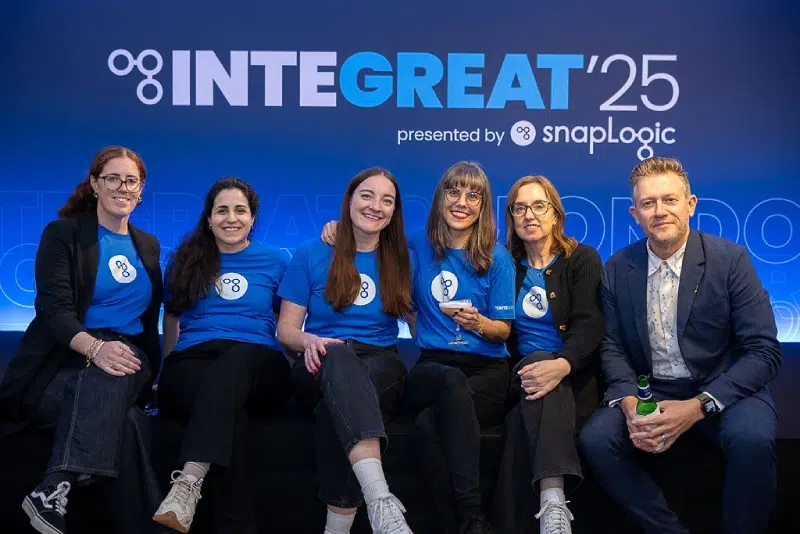
The future is integrated
The conversations over coffee throughout the day and cocktails as the day wound down were filled with excitement about what becomes possible when these aspects are taken for granted.
AI agents learn from context, adapt as the business evolves, and accelerate modernization without specific manual configuration.
A few key takeaways from the day:
- AI is in the “How” phase: The conversation has matured from discussing if AI will transform the enterprise to how it is already delivering concrete results.
- Key product innovations: SLIM (SnapLogic Intelligent Modernizer) brings the bright AI future into reach by addressing the risk and duration of migrating from legacy integration middleware. Meanwhile, the power of MCP ensures seamless connectivity between AI tools and existing critical business systems and data.
- Focus on ROI and practicality: Workshops emphasized the crucial need to calculate the ROI of AI projects and demonstrated the importance of plug-and-play connectivity for AI tools to access necessary back-end systems and data.
- Real-world customer success: Companies including Boehringer Ingelheim, Spotify, and IKEA shared how they leverage SnapLogic as the universal data fabric to modernize IT and support continuously growing, complex businesses.
- Maturation beyond pilots: AI projects are moving past early proofs-of-concept to real-world implementation, and IT leaders are shifting conversations to the organizational challenges involved in bringing technology to bear on complex business problems.
We heard repeatedly from attendees about how AI is not an add-on, but the centerpiece of how enterprises will operate in a new world of Digital Labor, where humans and agents work together to drive progress.
We are proud of our strong network of customers and partners, demonstrating real-world success with AI automation in the enterprise. I am sure that next year we will have an equally stellar collection of success stories from an even wider selection of brands and industries. See you there?
In the meantime, book a demo to catch a bit of the excitement yourself.





